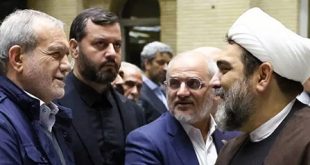Saeed Mortazavi: A Controversial Career in Iran’s Judiciary
Saeed Mortazavi, born in 1346 in the city of Taft, Iran, is a name closely associated with some of the most controversial events in the country’s judicial history. Known for his long tenure in various high-ranking legal and governmental positions, Mortazavi’s career has been marked by significant controversy, particularly for his role in the suppression of press freedoms, his involvement in the deaths at Kehrizak Detention Center, and his relationship with the political powers that shaped Iran’s judicial landscape in the 2000s.
Early Life and Education
Saeed Mortazavi’s journey in the legal field began at a young age. At 19, he enrolled at the University of Jurisprudence to study law. After completing his studies, he was appointed as a judge in Babak City, marking the start of his career in the Iranian judicial system. Over time, Mortazavi would rise through the ranks, becoming a prominent figure within Iran’s legal establishment.
Key Roles in Government
One of the most significant roles in Mortazavi’s career was his appointment as Prosecutor of Tehran from 1382 to 1389 (2003-2010). During his tenure, Mortazavi was a key figure in many of the legal and political decisions that shaped the country’s judicial landscape, particularly in times of political unrest.
From 1388 to 1389 (2009-2010), Mortazavi also served as the Deputy Prosecutor General of Iran. His influence continued to expand, and he was later appointed as the head of the Social Security Organization from 1390 to 1392 (2011-2013). However, his actions during this period, especially in relation to the suppression of opposition voices and the handling of protests, have been a source of widespread criticism.

